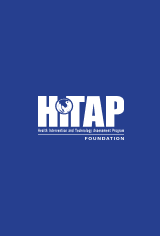22 September 2025
Cost-utility analysis of dasatinib and nilotinib for chronic myeloid leukemia patients who fail to respond to first-line treatment with imatinib in Thailand

22 September 2025
Cost-utility analysis of dasatinib and nilotinib for chronic myeloid leukemia patients who fail to respond to first-line treatment with imatinib in Thailand
About Project
Content
Imatinib, the first tyrosine kinase inhibitor (TKI) has been used widely as a first-line treatment for newly diagnosed CML patients. Approximately 20-30% of CML patients are resistant or intolerant to the drug, and half of these cases are due to a gene mutation in the ABL domain. Recently, second generation TKIs have emerged, such as dasatinib and nilotinib, and these have been used as alternative treatments for CML patients who are resistant to or intolerant of imatinib. Several experimental clinical studies have revealed that dasatinib and nilotinib have a higher success rate than high-dose imatinib. This study aims to assess whether these two treatments are cost-effective in the Thai context, and the results will be used to inform decisions regarding the coverage of these drugs in the NLEM.
Objective To assess the cost-utility and budget impact of treating chronic phase chronic myeloid leukemia (CP-CML) patients in Thailand who are resistant to standard-dose imatinib (400 mg/d), with dasatinib and nilotinib rather than high-dose imatinib (800 mg/d).
Materials and Methods A Markov simulation model was developed and used to estimate the lifetime costs and outcomes of treatment for CP-CML patients aged ≥ 38 years. The efficacy parameters were synthesized from a systematic review. Utilities using EQ-5D and costs were obtained from the Thai CML population. Costs and outcomes were compared and presented as the incremental cost-effectiveness ratio (ICER) in 2011 Thai baht (THB) per quality-adjusted life year (QALY) gained. One-way and probabilistic sensitivity analyses were performed to estimate parameter uncertainty.
Results From a societal perspective, treatment with dasatinib was found to yield more QALYs (2.13) at a lower cost (THB 1,631,331) per person than high-dose imatinib. Nilotinib treatment was also found to be more cost-effective than high-dose imatinib, producing an ICER of THB 83,328 per QALY gained. This treatment option also resulted in the highest number of QALYs gained of all the treatment options. The costs of providing dasatinib, nilotinib, and high-dose imatinib were estimated at THB 5 billion, THB 6 billion, and THB 7 billion, respectively.
Conclusion Treatment with dasatinib and nilotinib is likely to be more cost-effective than treatment with high-dose imatinib for CP-CML patients in the Thai context, who do not respond positively to standard-dose imatinib. Of these, dasatinib is found to be more cost-effective than nilotinib.
Research Type
Others
Related Technologies
Others
Keyword / Search / TAG
Research Team
Principal Researcher




